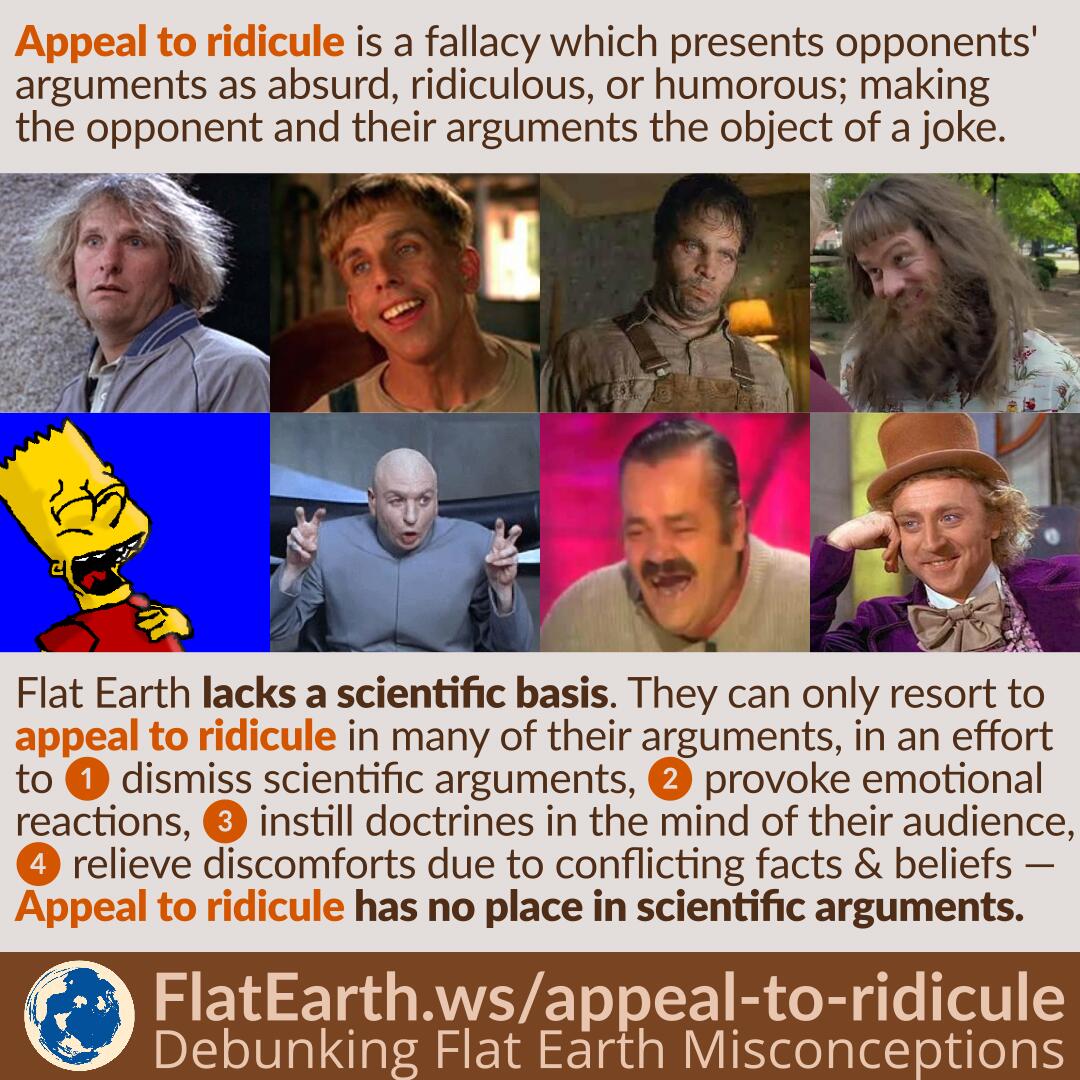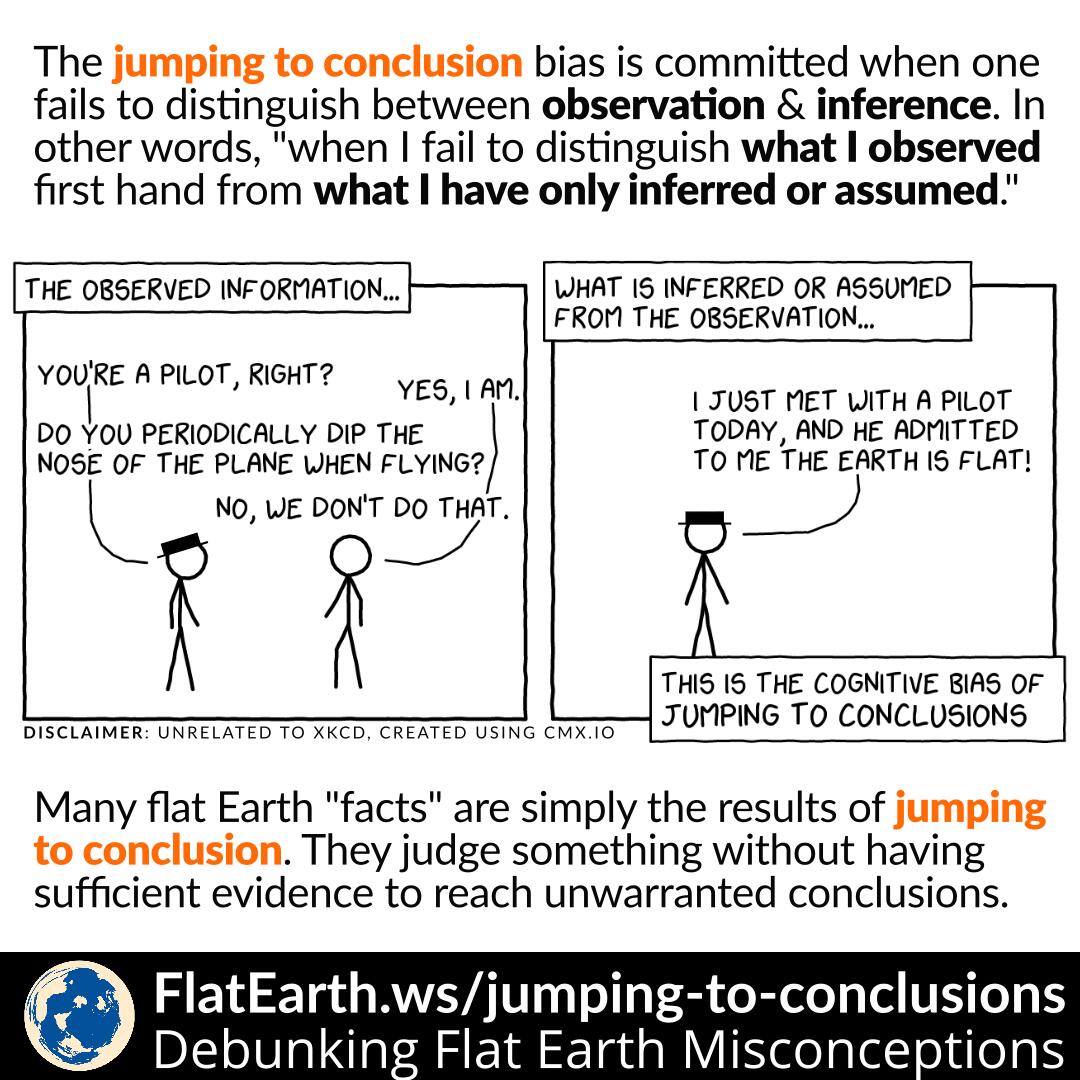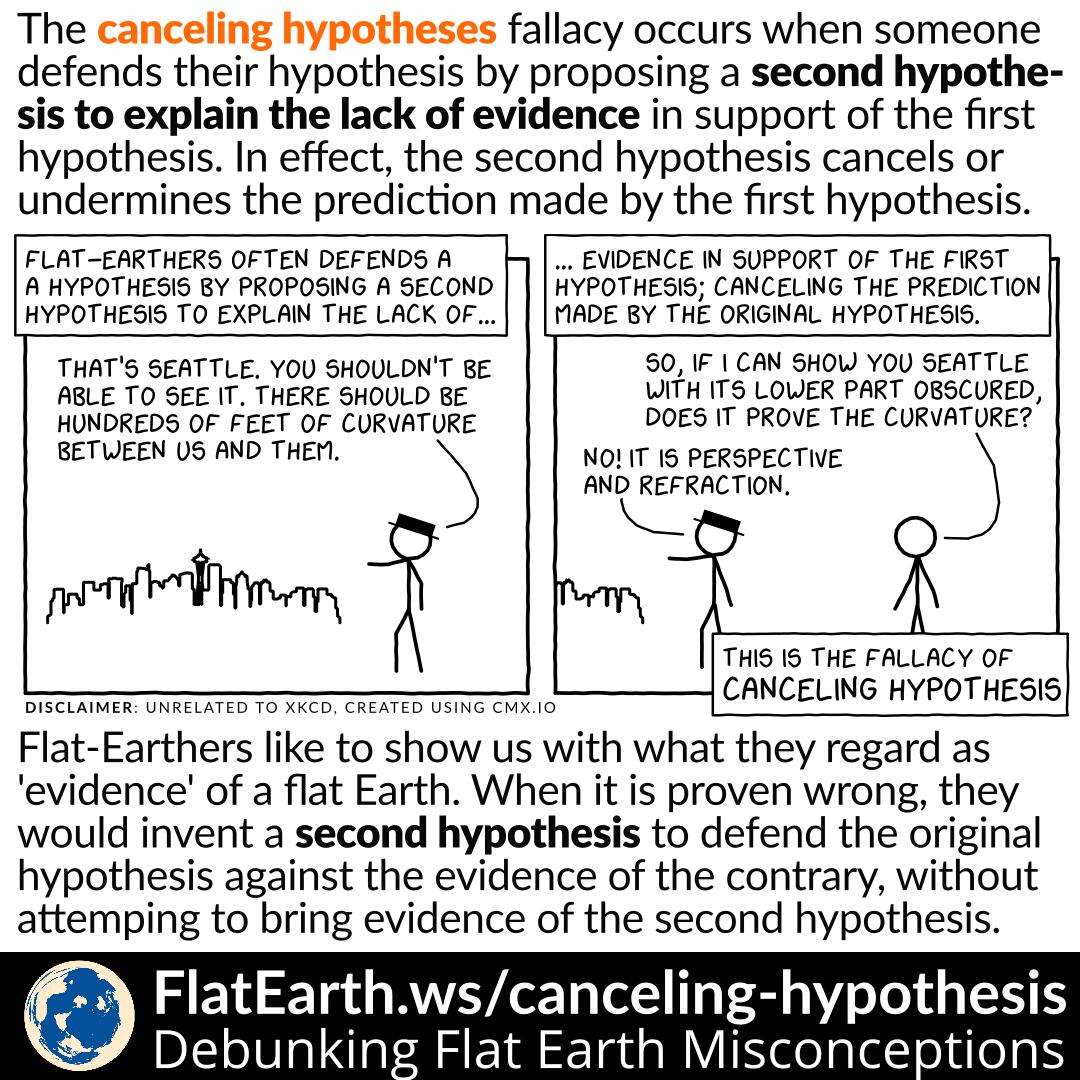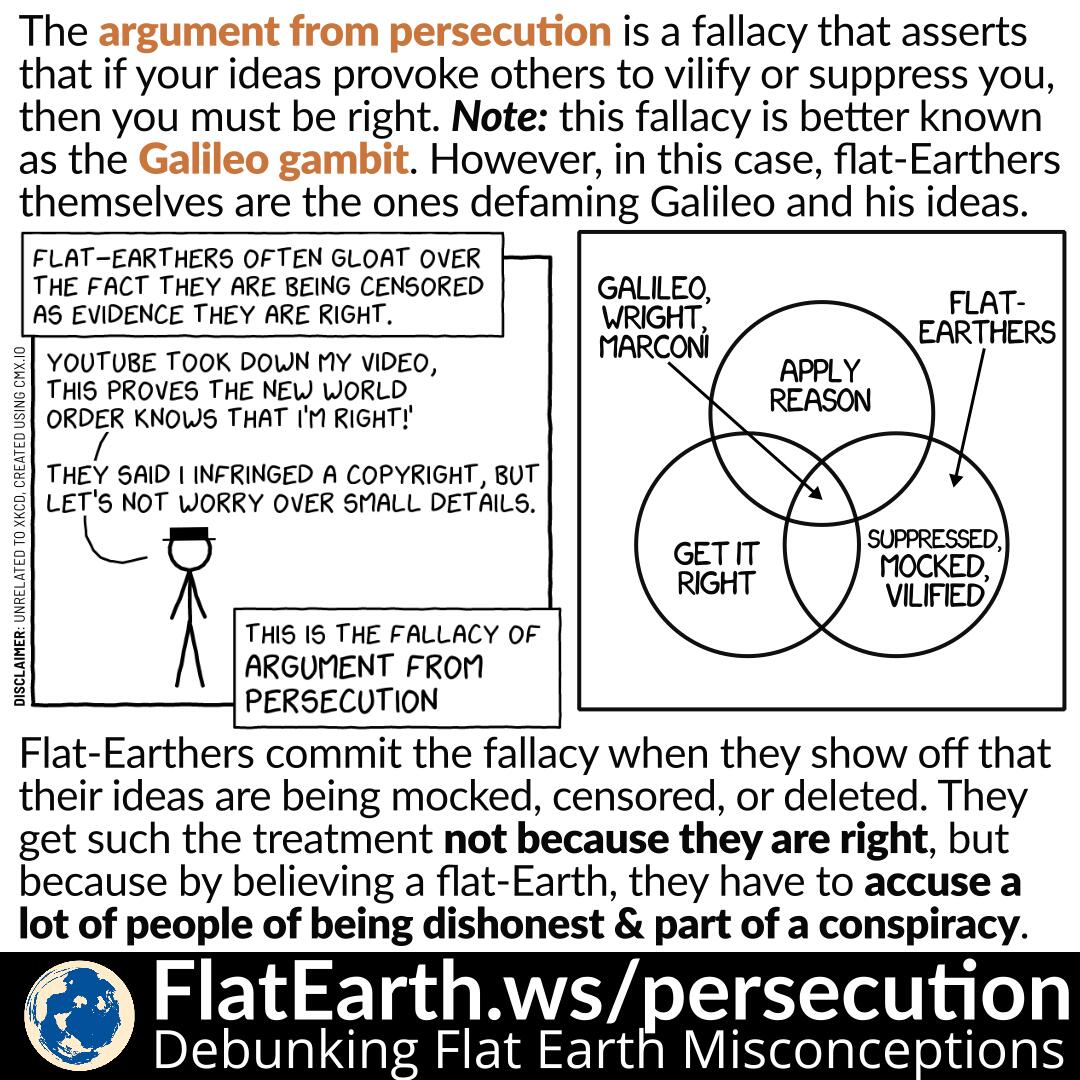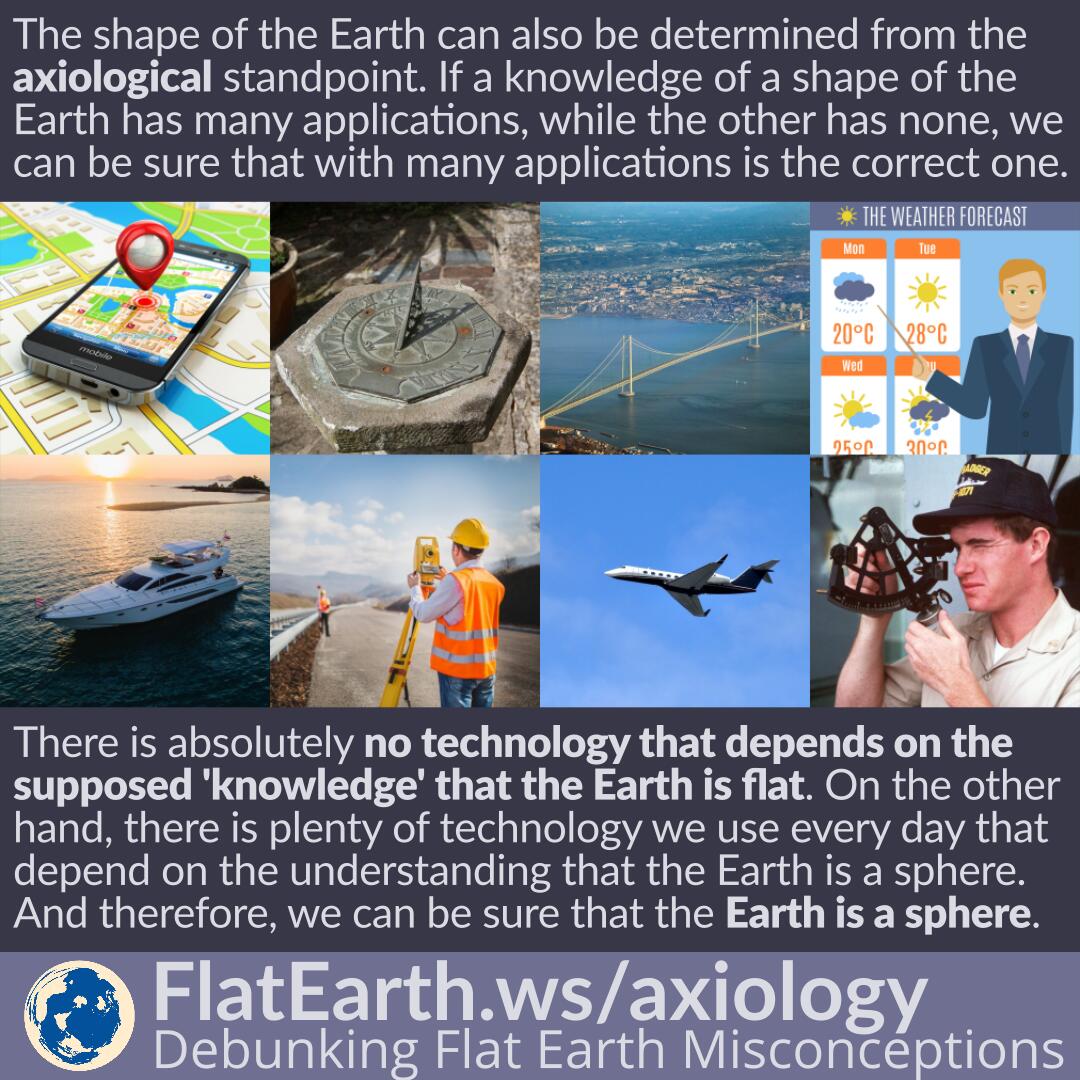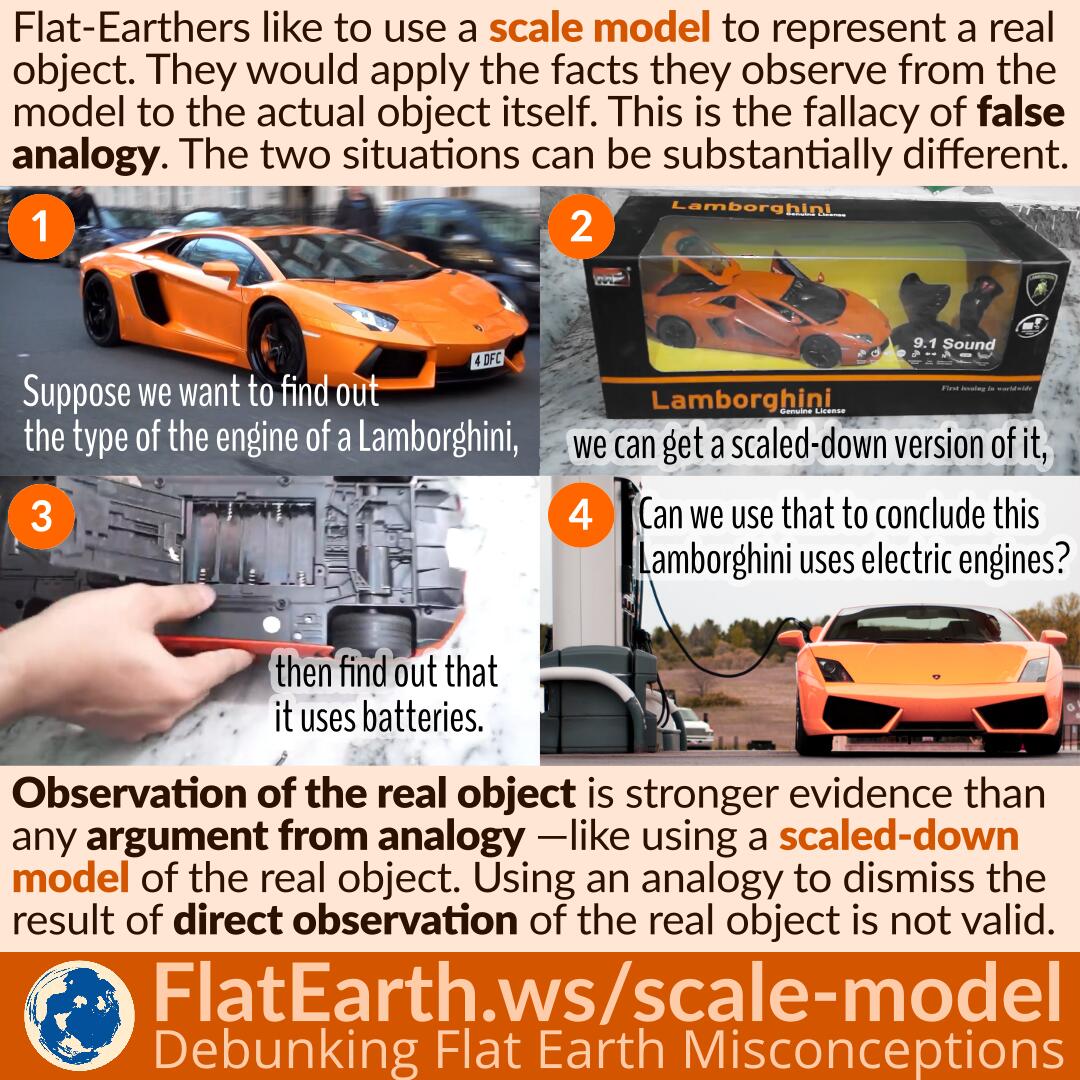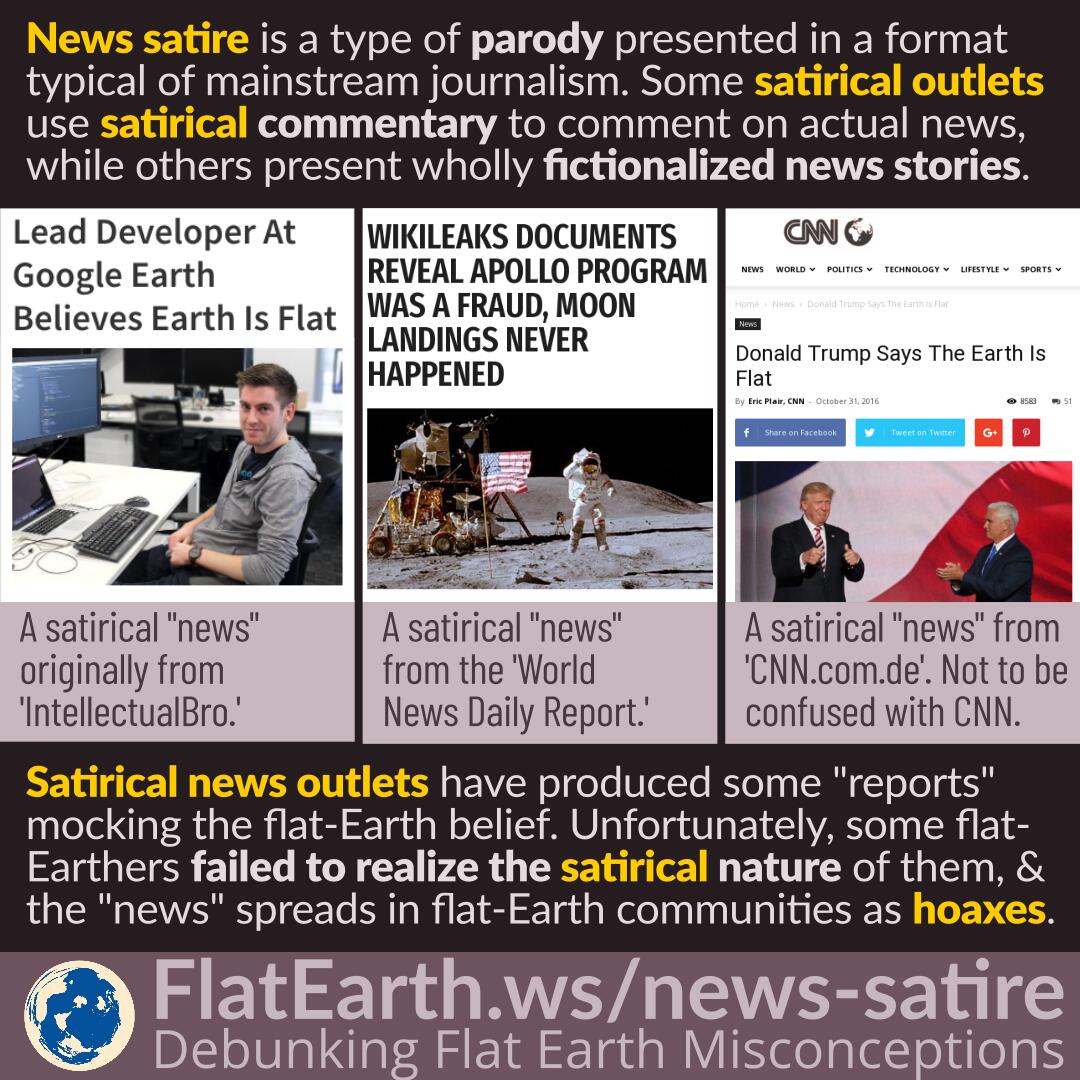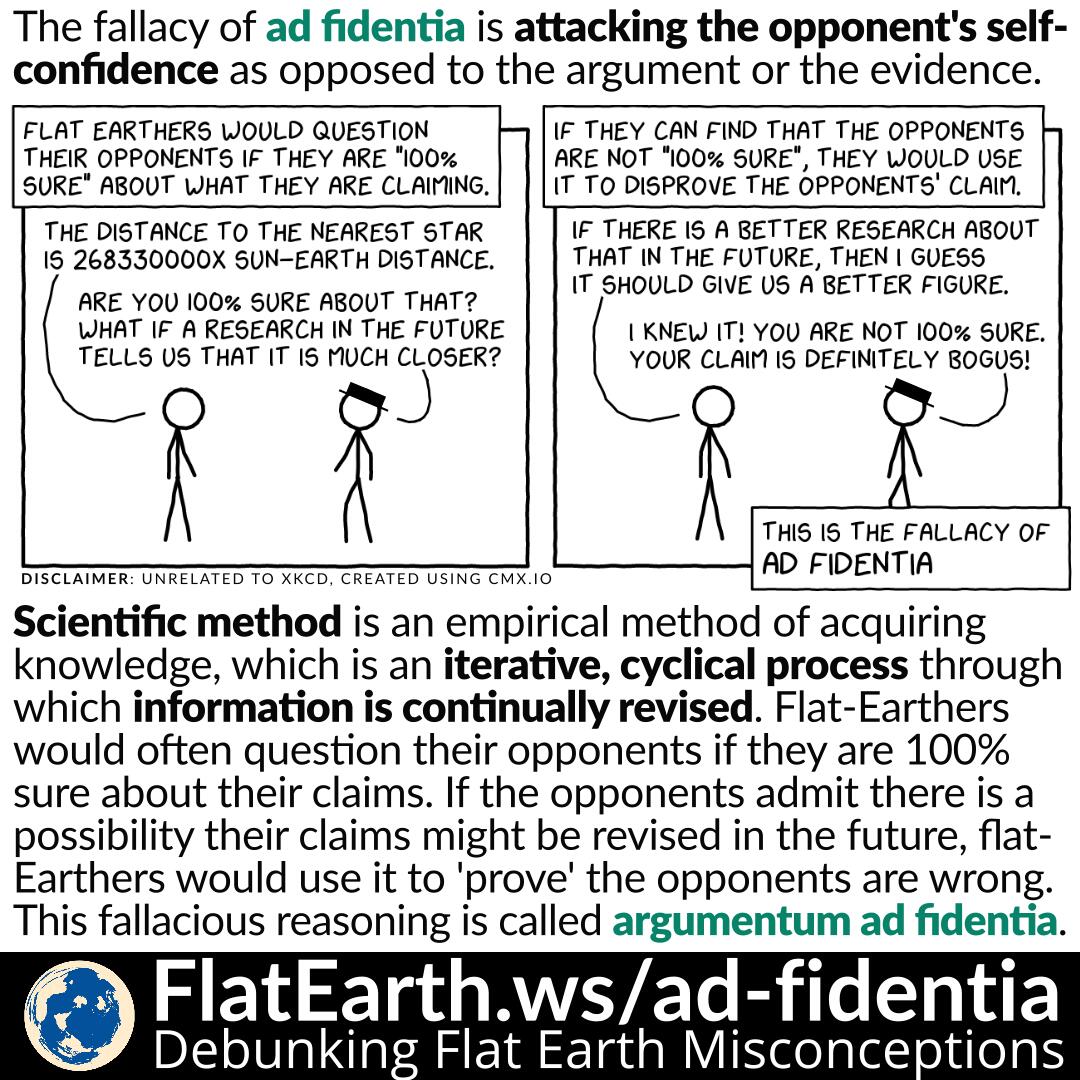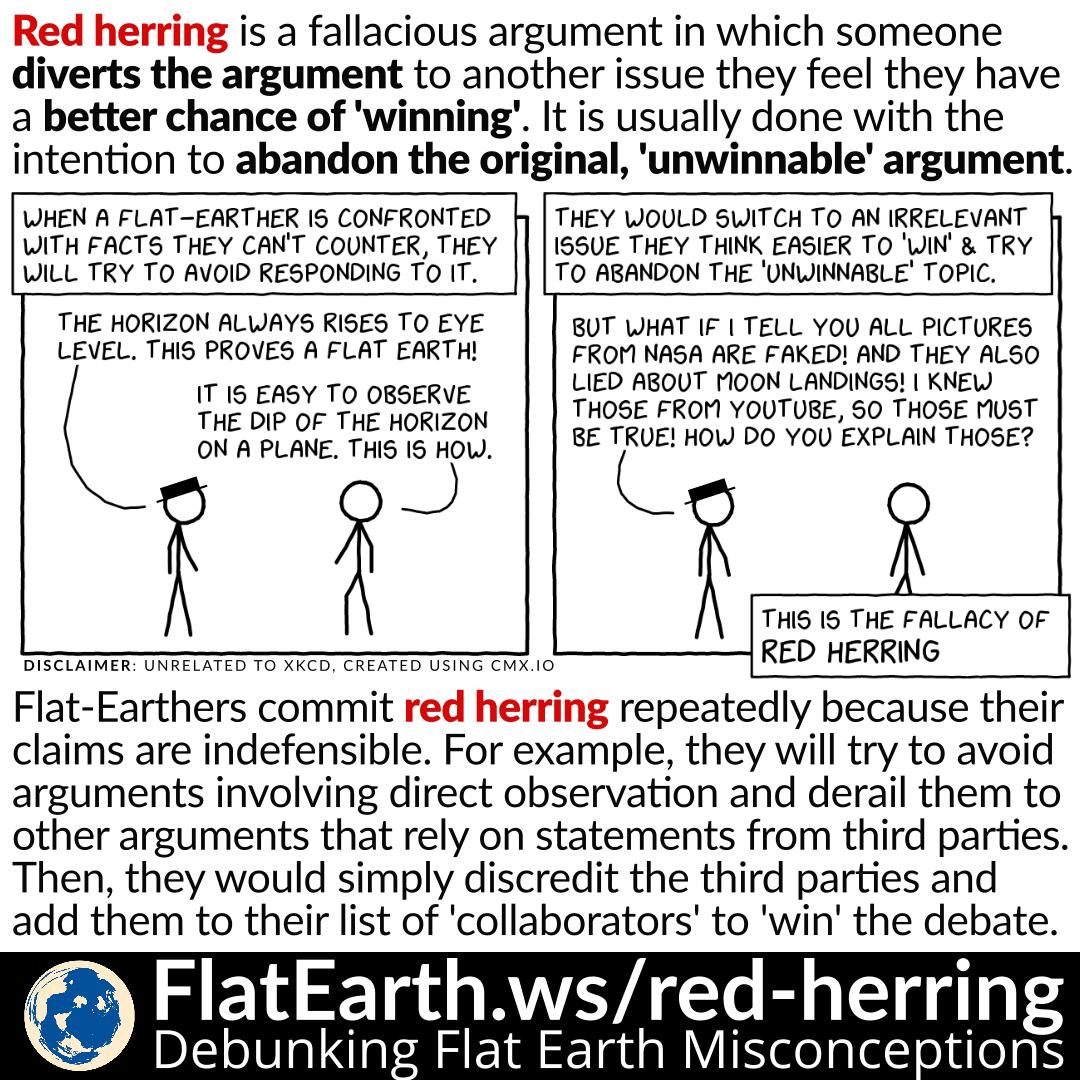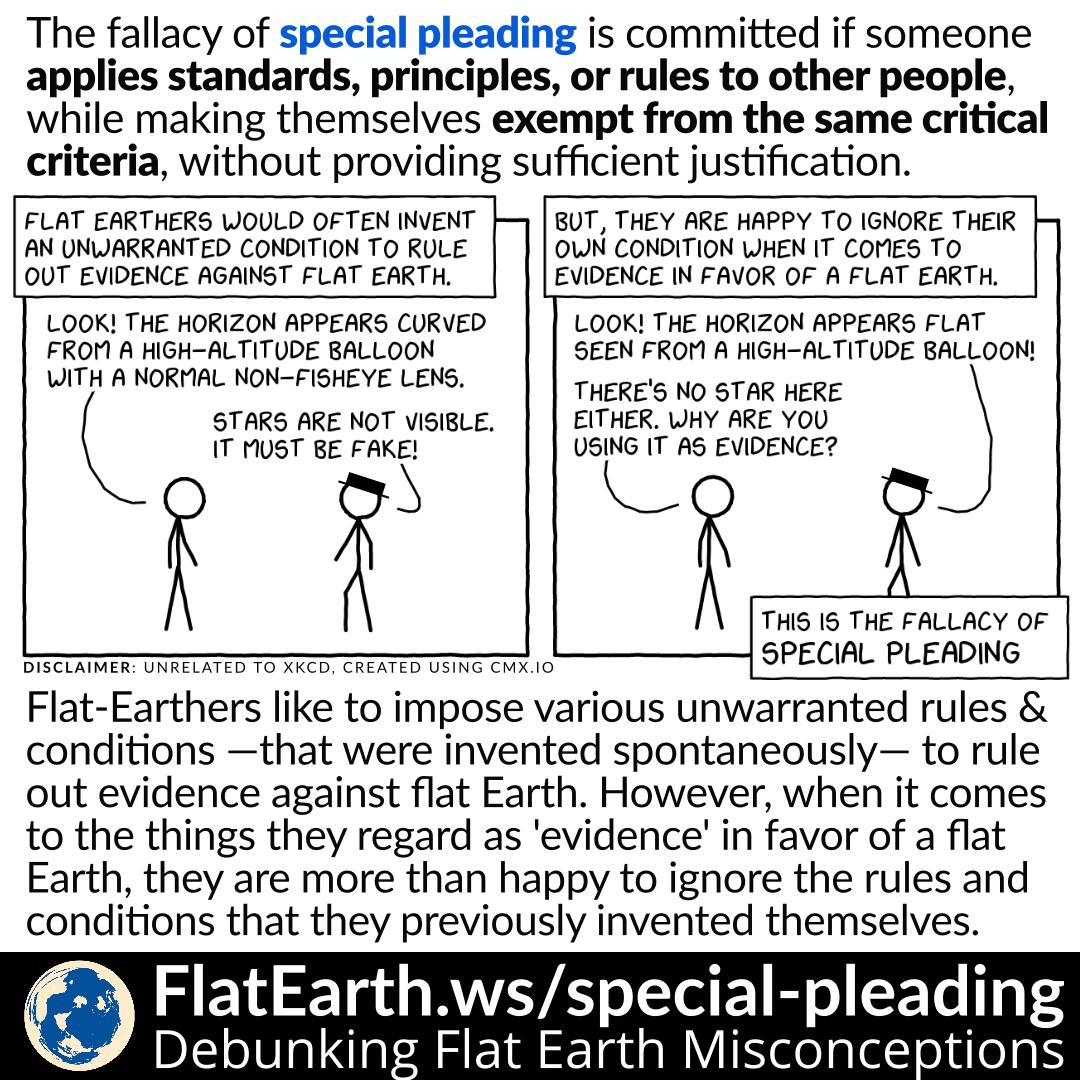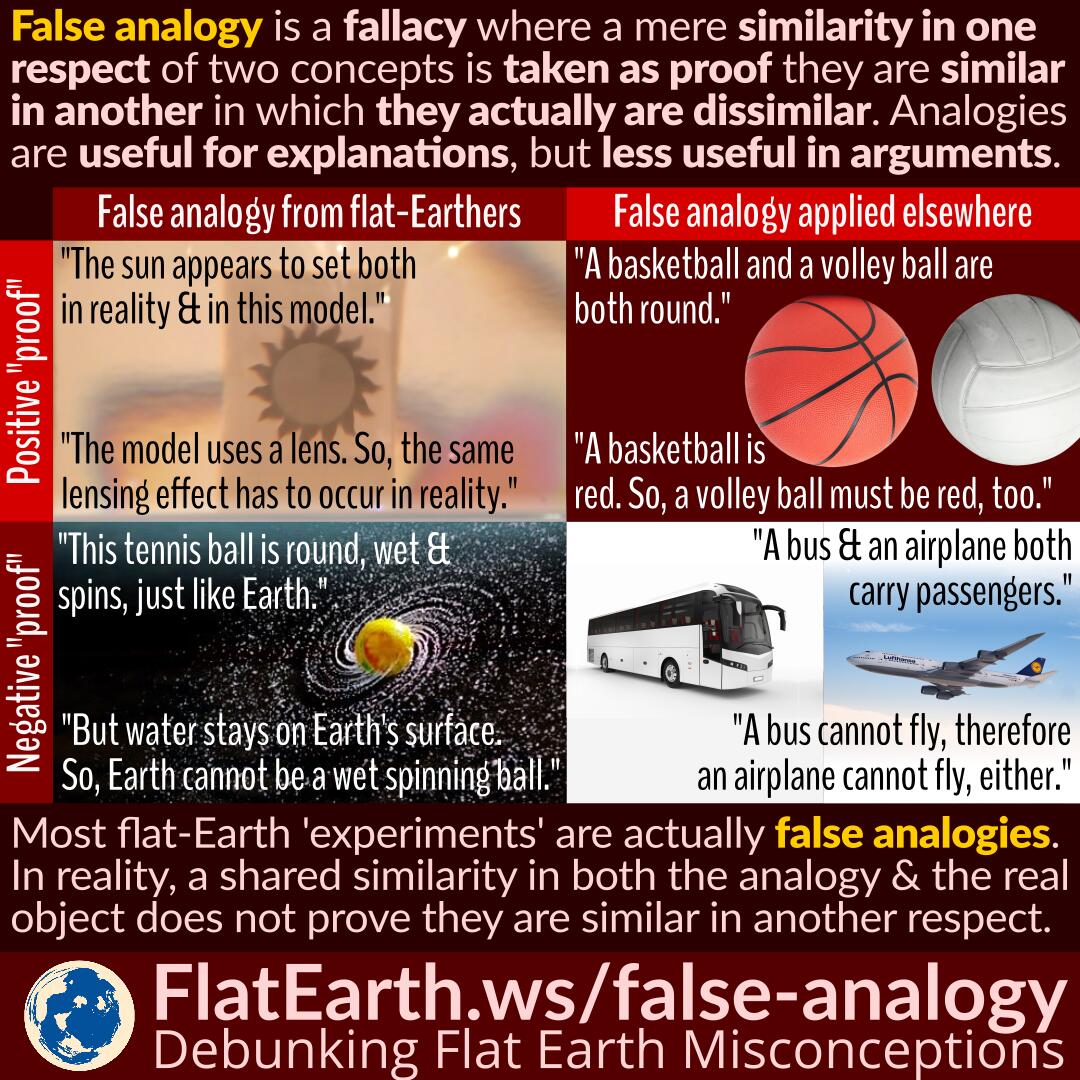Red herring is a fallacious argument style in which an irrelevant or false topic is presented in an attempt to divert attention from the original issue, with the intention of ‘winning’ an argument by leading attention away from the original argument and on to another, often unrelated topic.
Flat-Earthers often commit the fallacy of red herring —often repeatedly one after another— because their claims are indefensible. For example, they will try avoiding arguments involving direct observations and derail the discussion to other arguments that rely on statements from third parties. Then, they would discredit the third parties and add them to their list of “collaborators” to “win” the debate.
Continue reading “Red Herring”



